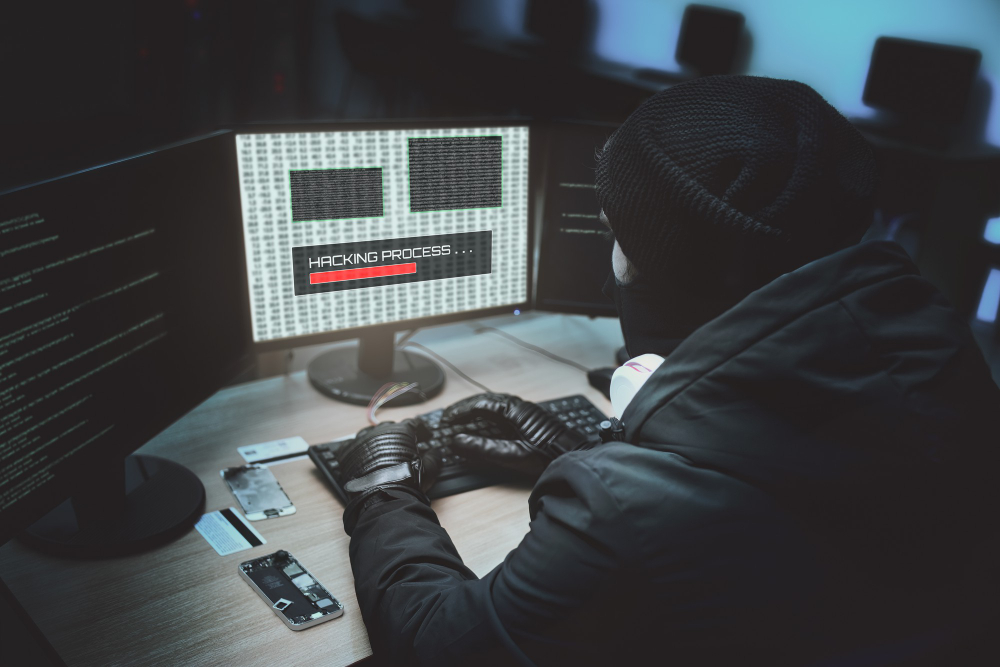Insider threats occur when someone within an organization misuses access to damage its systems, data, or operations. These threats can come from employees, contractors, or partners. They pose serious security, financial and reputational risks.
Detecting these threats is difficult because the insider already has legitimate access to the system. Organizations need strong security measures to minimize risks. This article will cover this in-depth, from an explanation of insider threats to best practices for protection.
What Is an Insider Threat?

Insider threats involve individuals who abuse authorized access to harm the company. This includes stealing data, sabotaging systems, leaking confidential information, or assisting external attackers. Therefore, companies must closely monitor and implement security policies to protect their critical assets.
Insider Risk vs. Insider Threat
These two threats have differences. Insider risk refers to the potential harm caused by insiders. This includes mistakes made unintentionally, such as clicking on a phishing link. Insider threats involve deliberate acts of crime, such as stealing data and spreading sensitive information.
It can be concluded that not all risks cause threats, but every threat arises from a risk. Organizations must understand both from here to determine the steps for more effective security implementation.
Types Of Insider Threat

Intentional
Deliberate insider threats involve individuals who intentionally misuse their access. They may steal sensitive information, sabotage systems, or assist cybercriminals. Motivations include financial gain, revenge, or corporate espionage.
Unintentional
Unintentional insider threats result from careless actions. Examples include getting caught in a phishing scam or system misconfiguration. These threats often stem from a lack of training or awareness.
Third-party threats
Third-party threats come from vendors, contractors, or partners accessing an organization’s systems. They may inadvertently expose data or be targeted by cybercriminals. To avoid this, organizations should vet third parties and limit their access to critical information.
Malicious threats
Malicious threats involve insiders who intentionally harm the organization. They may use their access to steal data, disrupt operations, or install malware.
Collusive threats
Collusive threats involve multiple insiders or insiders working together with external attackers. They coordinate to bypass security measures and steal data or cause disruption. These threats are more complex to detect because they involve multiple actors. Monitoring communications and access logs can help identify suspicious patterns.
How to Detect Malicious Insiders
Behavioral analytics
Behavioral analysis identifies unusual patterns in user activity. It flags actions such as accessing unauthorized files or logging in at odd hours.
Data loss prevention
Data loss prevention (DLP) tools monitor data movement. They block unauthorized transfers, detect sensitive information leaving the network, and alert the security team. DLP prevents both accidental and intentional data leakage.
Cybersecurity analytics and monitoring solutions
These solutions track network activity and detect anomalies. They help identify potential insider threats in real-time.
User behavior analytics
User behavior analysis (UBA) monitors user activity patterns. UBA flags unusual behavior, such as accessing restricted files or logging in from unusual locations. UBA helps identify threats before they escalate.
Machine learning
Machine learning algorithms analyze large data sets to identify patterns. They improve threat detection by learning from past incidents.
Threat hunting
Threat hunting involves proactively searching for insider threats. Security teams analyze logs, investigate anomalies, and identify potential risks. This approach helps detect threats before they cause harm.
Insider threat management and security solutions
These solutions provide tools to monitor, detect, and respond to insider threats. They integrate with existing security systems.
Real-time monitoring
Real-time monitoring detects insider threats as they occur. It tracks file access, data transfer, and login attempts. Immediate alerts allow organizations to respond quickly.
User feedback learning
User feedback learning improves the detection system by incorporating feedback from the security team. This improves accuracy over time.
Kill chain detection
Kill chain detection maps the steps of an attack. Organizations can identify insider threats early by analyzing behavior at various stages and taking preventive action.
Malicious Insider Threat Indicators

Indicators of a malicious insider threat include unusual login times, accessing unauthorized files, and downloading large amounts of data. Other signs include using unauthorized devices, bypassing security controls, and exhibiting disgruntled behavior. Monitoring these indicators helps detect threats early.
Insider Threat Examples
An insider error steers data of Texas drivers into a hacker’s hands
An employee at an agency in Texas accidentally exposed driver data. A hacker exploited the mistake to steal personal information. This breach affected thousands of residents.
A fired employee fires back
A terminated employee deleted important files before leaving the company. This action disrupted operations and caused significant financial losses.
City of Dallas files deleted because of an insider’s mistake
An employee accidentally deleted an important file from the city database. This error caused a service disruption and required extensive recovery efforts.
How To Protect Against an Insider Attack: Best Practices

Protect critical assets
Identify and secure critical assets. Restrict access to sensitive data and systems to reduce risk.
Enforce policies
Implement strict security policies and ensure employees adhere to them. Regular audits help verify compliance.
Increase visibility
Monitor user activity and network traffic. Use tools to gain visibility into potential insider threats.
Promote culture changes
Encourage security awareness. Train employees to recognize and report potential threats.
Frequently Asked Questions
What is considered an insider threat?
An insider threat is any action an authorized user takes that harms the organization. This includes both intentional and unintentional actions.
Who could be an insider threat?
Employees, contractors, vendors, and business partners with system access can be insider threats. Threats arise from both malicious actions and accidental errors.
What is not an insider threat?
External hackers without authorized access are not insider threats. In addition, natural disasters or system failures are also excluded.
Conclusion
External threats are a significant risk to organizations. They can cause financial loss, reputational damage, and operational disruption. Organizations can reduce risk and protect their assets by understanding threats and implementing best practices.
